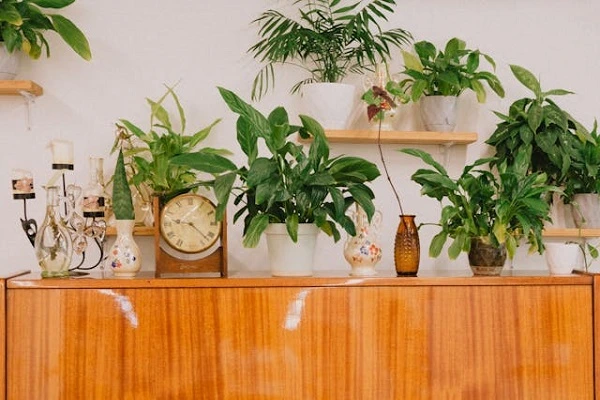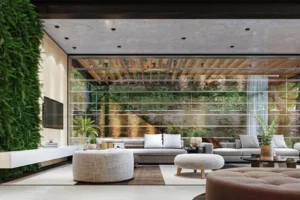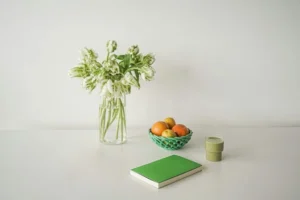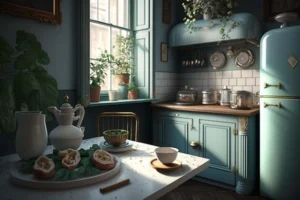Living in a small space often means juggling style and practicality, especially when it comes to growing plants indoors. Many growers struggle to find setups that are both effective and visually pleasing. That’s where flood-and-drain sideboards come in—a clever way to combine function with furniture.
This article will walk you through fabricating a flood-and-drain sideboard that fits right into your home decor. It’s perfect for those who want a seamless blend of greenery and style without sacrificing space or design. By the end, you’ll have the know-how to build a growing setup that looks great and works even better. No bulky racks or messy trays—just smart, sleek indoor gardening.
Why Flood-and-Drain Systems Work Beautifully in Furniture Form
Flood-and-drain, also known as ebb and flow, is a popular growing method because it’s simple and efficient. The process floods the plant roots with nutrient-rich water, then drains it away, giving roots plenty of oxygen. This cycle promotes healthy growth with minimal fuss.
What makes this method perfect for furniture-style setups is its clean operation. Unlike constantly flooded systems, flood-and-drain limits water exposure, reducing leaks and spills—key concerns when integrating plants into living spaces.
The cyclical watering also means less frequent maintenance. You can set timers to flood and drain automatically, making it ideal for busy or forgetful growers. This hands-off approach keeps your green space thriving without turning your home into a maintenance chore.
Another advantage is how flood-and-drain trays fit neatly into cabinets, shelves, or sideboards. With proper design, you can hide plumbing, pumps, and reservoirs inside stylish furniture. This keeps your growing area discreet and beautiful.
Plus, these setups often use water-efficient recirculation. They recycle nutrients and reduce waste, which is great for anyone wanting an eco-friendly garden that fits their home’s vibe.
In summary, flood-and-drain systems offer the perfect balance between performance and aesthetics. They let you grow vibrant plants while keeping your interiors chic and clutter-free—exactly what small-space growers crave.
Design Planning for the Modern Indoor Grow Sideboard
Before diving into building, it’s important to plan your sideboard grow unit carefully. Start by thinking about the types of plants you want to grow. Leafy greens, herbs, and microgreens are great options because they thrive in flood-and-drain setups and don’t need too much space.
Lighting is another key factor. If your sideboard will be near a window, natural light can help. Otherwise, plan to integrate LED grow lights into your design for consistent growth. Consider how you’ll mount or hide the lighting to keep the look clean.
Water storage and plumbing should be discreet. You’ll want a reservoir tucked inside the base or a hidden compartment, with tubing routed so it’s not visible. This keeps your sideboard sleek and free of clutter.
When deciding on size, measure the space where the sideboard will live. Aim for dimensions that fit your room comfortably but still provide enough growing area. Standard widths between 24 to 36 inches work well in most small spaces, with heights around 30 to 36 inches for easy access.
Finally, choose an aesthetic style that suits your home. Minimalist designs with clean lines blend well in modern interiors. Rustic wood or Scandinavian-inspired pieces add warmth and character. Sketching your idea—either on paper or using free design software—can help visualize how everything will fit and look together.
Good planning now will make the fabrication process smoother and result in a grow sideboard you’re proud to show off.
Materials and Components Checklist
Gathering the right materials before starting is key to a smooth build. Let’s break down what you’ll need into three main groups: structural, flood-and-drain hardware, and functional add-ons.
Structural Materials
These form the furniture frame. You can use wood panels, reclaimed sideboards, or even modify flat-pack furniture. Choose sturdy, water-resistant materials to withstand occasional moisture. Metal brackets and screws will help keep everything secure.
Flood-and-Drain Hardware
This is the core of your setup. You’ll need a grow tray that fits inside the sideboard, a submersible pump to move water, tubing to connect parts, a reservoir to hold the nutrient solution, and bulkhead fittings for drainage. Look for compact components designed for indoor use.
Functional Add-Ons
To keep things running smoothly and stylish, consider waterproof liners to protect the wood, LED grow lights for supplemental lighting, and odor control solutions if you’re growing aromatic plants. Timers and power strips with surge protection make automation easy.
If you’re on a budget, upcycling old furniture or using recycled materials can save money and add character. Modular components also allow you to expand or adjust your setup later.
Having this checklist ready ensures you won’t have to pause the project searching for parts. With the right materials, your flood-and-drain sideboard will be both functional and a beautiful addition to your home.
Step-by-Step Fabrication Process
Now that you have your materials ready, it’s time to build your flood-and-drain sideboard. Taking it step by step will make the process manageable and enjoyable.
Step 1: Prepare the Frame
Start by assembling or modifying your furniture piece. Make sure the base is sturdy and waterproof any wood surfaces that might come into contact with water.
Step 2: Install the Grow Tray
Place the grow tray inside the sideboard where plants will sit. It should fit snugly but allow space for tubing and water flow.
Step 3: Set Up Drainage and Pump
Attach bulkhead fittings to the tray for water to drain properly. Connect tubing from the grow tray to the reservoir and install the pump to cycle water back.
Step 4: Add Waterproof Liners
Line the inside of the tray and any vulnerable parts with waterproof material to prevent leaks and damage.
Step 5: Integrate Lighting
Mount LED grow lights above the plants, securing wiring neatly so it doesn’t clutter the design.
Step 6: Test the Flood-and-Drain Cycle
Fill the reservoir, turn on the pump, and observe the water flow. Adjust timing and flow to avoid overflooding or drying out.
Following these steps carefully helps you avoid common mistakes and build a reliable, attractive grow sideboard. It’s satisfying to see your creation come together and ready for planting.
Maintaining Your Flood-and-Drain Sideboard for Long-Term Success
Once your sideboard is up and running, keeping it in good shape is essential. Regular maintenance ensures healthy plants and prevents issues before they become major headaches.
Check Water Levels and Quality
Keep an eye on your reservoir’s water level. Top it off with fresh nutrient solution as needed. Changing the solution every one to two weeks helps prevent salt buildup and keeps plants nourished.
Clean Components Regularly
Every few weeks, clean the pump, tubing, and grow tray to avoid algae and clogs. This simple step extends the life of your equipment and maintains water flow efficiency.
Inspect for Leaks or Damage
Since your setup is integrated into furniture, watch for any signs of water leakage. Early detection protects your sideboard and floors from water damage.
Monitor Plant Health
Healthy roots and foliage are signs your flood-and-drain cycle is working well. If plants show stress, check for overwatering, nutrient imbalance, or lighting issues.
Adjust Timers and Settings Seasonally
Changes in light and temperature can affect plant needs. Adjust your watering cycle and light schedule to match seasonal variations for optimal growth.
With a little attention and routine care, your flood-and-drain sideboard will stay a stylish and productive part of your home for years to come. Maintenance might feel like extra work, but it’s the key to long-term success and enjoyment.
Customizing Your Flood-and-Drain Sideboard for Personal Style
One of the best parts of building your own grow sideboard is making it truly yours. Customization lets you blend function with personal flair, so it fits seamlessly into your living space.
Start by choosing finishes that match your décor. Staining or painting wood can completely change the vibe—from rustic warmth to sleek modern. Adding decorative knobs or handles gives it a unique touch.
Consider incorporating extra features like built-in shelves or drawers for storing gardening tools and supplies. These keep your space tidy and organized, making care easier and more enjoyable.
Lighting styles can also be customized. Use adjustable LED bars or color-changing lights to create ambiance while supporting plant growth. Smart controls let you fine-tune settings with a tap.
Don’t forget about the planter itself. Use different growing media like clay pellets, rock wool, or coco coir to suit your plants’ needs and aesthetic preferences.
Finally, add personal accents such as small artworks, inspirational quotes, or even integrated seating if space allows. Your sideboard can become a conversation piece, combining greenery with your unique taste.
Customizing means your flood-and-drain furniture isn’t just practical—it’s a stylish, personal statement that complements your home and lifestyle perfectly.
Bringing Style and Growth Together
Building a flood-and-drain sideboard is a rewarding project that combines practical indoor gardening with stylish home design. With thoughtful planning, the right materials, and careful fabrication, you can create a piece that nurtures your plants and enhances your living space.
This method is especially perfect for small homes where every inch counts. By integrating water-efficient flooding and draining cycles into a sleek piece of furniture, you optimize growth while keeping your décor fresh and modern.
Remember, success comes from regular maintenance and personal customization, making your sideboard not just a tool but a centerpiece you’ll love. Whether you’re a seasoned grower or just starting, this approach offers an exciting way to enjoy gardening without sacrificing style.
So go ahead—embrace this blend of design and green living. Your stylish, self-watering sideboard awaits, ready to bring fresh life and beauty into your home.




